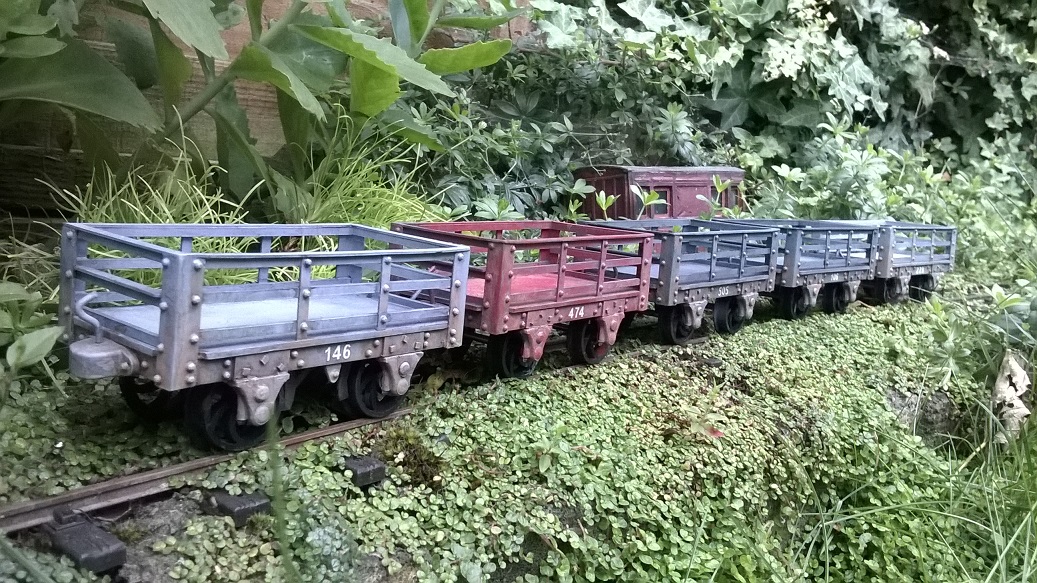I am contemplating standardizing on this particular variant of the chain and buffer coupling for the Far End Tramway due to the anticipated sharp curves to get up the "mountain" behind the house. I was wondering whether any of you already use them and whether you would have any comments or observations about them that you would care to share?
My worry is that there might be an issue with accidental uncoupling during reversing moves due to the relatively small size of the hook, but for the IIe operation I am planning for the back yard, they looks enough like Sierra Leone couplings for them not to have that jarring model coupling look.
Taa in advance for any comments
Cheers,
Peter in Va
Binnie Carmarthen Couplings
- IrishPeter
- Driver

- Posts: 1400
- Joined: Wed Feb 23, 2011 3:24 am
- Location: 'Boro, VA
Binnie Carmarthen Couplings
Traffic Pattern? What pattern? Spuds out; grain in, but cattle, sheep and passengers are a lot less predictable.
Re: Binnie Carmarthen Couplings
Hello!
Binnie's Carmarthen couplings are pretty much my standard type - the "bumper" type for slate wagons etc, and the "medium" (I think) for freelance wagons. I cut the hooks off, turn them upside down and add a new one. That's partly because they're less fussy-looking that way, but also because the hooks don't like thinner coupling chain, as I recall - I've been making couplings that way for about twenty years so I don't remember precisely how/why they've evolved! They do work pretty well though - my freelance stock is perfectly happy being propelled through pointwork, for example. That's less true of the slate wagons, with their "bumper" type Carmarthens, but I think that's only to be expected of such light stock. The only other thing I'd add is that they do benefit from having the moulding lines filed off before painting - they can be quite prominent and go right across the face of the buffer.
I glue them on with two-part expoxy, seems to work fine. The glue sometimes squeezes through the screw holes (which are difficult to use as intended because the buffer gets in the way) in a way that looks like rivets or similar, otherwise the holes can be filled or dummy rivets added.
Here are a couple of pictures...


All the best,
Andrew
Binnie's Carmarthen couplings are pretty much my standard type - the "bumper" type for slate wagons etc, and the "medium" (I think) for freelance wagons. I cut the hooks off, turn them upside down and add a new one. That's partly because they're less fussy-looking that way, but also because the hooks don't like thinner coupling chain, as I recall - I've been making couplings that way for about twenty years so I don't remember precisely how/why they've evolved! They do work pretty well though - my freelance stock is perfectly happy being propelled through pointwork, for example. That's less true of the slate wagons, with their "bumper" type Carmarthens, but I think that's only to be expected of such light stock. The only other thing I'd add is that they do benefit from having the moulding lines filed off before painting - they can be quite prominent and go right across the face of the buffer.
I glue them on with two-part expoxy, seems to work fine. The glue sometimes squeezes through the screw holes (which are difficult to use as intended because the buffer gets in the way) in a way that looks like rivets or similar, otherwise the holes can be filled or dummy rivets added.
Here are a couple of pictures...

All the best,
Andrew
Who is online
Users browsing this forum: No registered users and 6 guests
